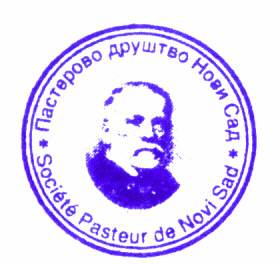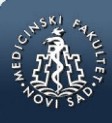md-medicaldata
Main menu:
- Naslovna/Home
- Arhiva/Archive
- Godina 2024, Broj 1
- Godina 2023, Broj 3
- Godina 2023, Broj 1-2
- Godina 2022, Broj 3
- Godina 2022, Broj 1-2
- Godina 2021, Broj 3-4
- Godina 2021, Broj 2
- Godina 2021, Broj 1
- Godina 2020, Broj 4
- Godina 2020, Broj 3
- Godina 2020, Broj 2
- Godina 2020, Broj 1
- Godina 2019, Broj 3
- Godina 2019, Broj 2
- Godina 2019, Broj 1
- Godina 2018, Broj 4
- Godina 2018, Broj 3
- Godina 2018, Broj 2
- Godina 2018, Broj 1
- Godina 2017, Broj 4
- Godina 2017, Broj 3
- Godina 2017, Broj 2
- Godina 2017, Broj 1
- Godina 2016, Broj 4
- Godina 2016, Broj 3
- Godina 2016, Broj 2
- Godina 2016, Broj 1
- Godina 2015, Broj 4
- Godina 2015, Broj 3
- Godina 2015, Broj 2
- Godina 2015, Broj 1
- Godina 2014, Broj 4
- Godina 2014, Broj 3
- Godina 2014, Broj 2
- Godina 2014, Broj 1
- Godina 2013, Broj 4
- Godina 2013, Broj 3
- Godina 2013, Broj 2
- Godina 2013, Broj 1
- Godina 2012, Broj 4
- Godina 2012, Broj 3
- Godina 2012, Broj 2
- Godina 2012, Broj 1
- Godina 2011, Broj 4
- Godina 2011, Broj 3
- Godina 2011, Broj 2
- Godina 2011, Broj 1
- Godina 2010, Broj 4
- Godina 2010, Broj 3
- Godina 2010, Broj 2
- Godina 2010, Broj 1
- Godina 2009, Broj 4
- Godina 2009, Broj 3
- Godina 2009, Broj 2
- Godina 2009, Broj 1
- Supplement
- Galerija/Gallery
- Dešavanja/Events
- Uputstva/Instructions
- Redakcija/Redaction
- Izdavač/Publisher
- Pretplata /Subscriptions
- Saradnja/Cooperation
- Vesti/News
- Kontakt/Contact
 Pasterovo društvo
Pasterovo društvo
- Disclosure of Potential Conflicts of Interest
- WorldMedical Association Declaration of Helsinki Ethical Principles for Medical Research Involving Human Subjects
- Committee on publication Ethics
CIP - Каталогизација у публикацији
Народна библиотека Србије, Београд
61
MD : Medical Data : medicinska revija = medical review / glavni i odgovorni urednik Dušan Lalošević. - Vol. 1, no. 1 (2009)- . - Zemun : Udruženje za kulturu povezivanja Most Art Jugoslavija ; Novi Sad : Pasterovo društvo, 2009- (Beograd : Scripta Internacional). - 30 cm
Dostupno i na: http://www.md-medicaldata.com. - Tri puta godišnje.
ISSN 1821-1585 = MD. Medical Data
COBISS.SR-ID 158558988
KORELACIJA TRAJANJA MENOPAUZE I KLINIČKIH FAKTORA RIZIKA ZA NASTANAK OSTEOPOROTSKOG PRELOMA
CORRELATION BETWEEN THE DURATION OF MENOPAUSE AND CLINICAL RISK – TEN YEAR CROSS-SECTION
Authors
Atila Klimo
Specijalna bolnica za rehabilitaciju „Banja Kanjiža“ Kanjiža
The paper was received on 12.02.2017. Accepted on 22.02.2017
Correspondence to
prim. dr med. Atila Klimo, fizijatar-balneoklimatolog
Specijalna bolnica za rehabilitaciju „Banja Kanjiža“ Kanjiža
24420 Kanjiža, Narodni park b.b,
tel: +38124875163,
e-mail: petik@stcable.net
Abstract
Introduction: Type, number and association of clinical risk factors (CRFs) provide very valuable data on the risk of osteoporotic fractures independent from the quantitatively determined bone density. And the lost bone mass is in correlation with the length of menopause as the result of catabolic effect of estrogen deficiency. Objective: The aim of this research was to examine the influence of a number of clinical risk factors in order to evaluate the origin of osteoporotic fractures on the bone mass of women with osteoporosis and osteopenia, depending on the existence and length of menopause. Material and methods: Observational analytical cross-sectional study covered a population specimen of 1159 persons who underwent central DXA osteodensitometry on the spine and hip in the Specialized hospital for rehabilitation "Banja-Kanjiža" in Kanjiža in the period between 2006 and 2016. All were tested for the presence of clinical risk factors. All the women (N=1096) were questioned on the time of the occurrence of menopause, and its duration was calculated from the moment of measuring of the bone mineral density. Statistical processing and data analysis was conducted via SPSS ver 20.0 program by IBM. Results: The study has a 93.7% power for a α=0,05 error level to discover a statistically significant difference between female patients with the duration of menopause up to 9 years and those who had it for 10 and more years in relation to incidence of osteoporosis. Women with more than 2 clinical risk factors (CRFs 2+) are on the border of conventional levels of significance when it comes to incidence of osteoporosis (p=0.070 and p=0.065). CRFs number is a statistically significant predictor of osteoporosis when the influence of the duration of menopause is excluded (n=0.022). If the CRFs number is observed as a numerical parameter, the difference between women with osteoporosis and osteopenia is statistically significant only in the group of women with menopause lasting less than 9 years (Z=-2.587; p=0.010). Women with early menopause have a statistically lower T-score on the spine (t=-2.353; p=0.019) than women whose cycle stopped in the usual time. There is a statistically significant difference between women with osteoporosis with and without early menopause with CRFs 2+ (X2=54.904 p<0.001), especially between the groups with menstruation vs. menopause 6=> years (p<0.001) and group menopause <=5 vs. 6=> years (p<0,001). There is a higher T-score correlation on the femur (Rho=0.293 p<0.001) than on the spine (Rho=0.830 p<0.030) in women with menopause 6=> years (T-score femur Rho=0.260 p<0.001) with CRFs 2+. Conclusion: Women with menopause for six and more years and have more than two CRFs for osteoporotic fracture have the highest risk of osteoporotic fracture of the femur.
Key words
bone density, risk factors, menopause
Sažetak
Uvod: Vrsta, broj i udruženost kliničkih faktora rizika pružaju vrlo vredne podatke o riziku osteoporotskog preloma nezavisno od kvantitativno utvrđene gustine kosti. A izgubljena količina koštane mase je povezana sa dužinom trajanja menopauze, kao rezultat kataboličkog efekta nedostatka estrogena.
Cilj: Cilj ovog istraživanja je bio da se ispita uticaj broja kliničkih faktora rizika za procenu nastanka osteoporotskog preloma na koštanu masu žena sa osteoporozom i osteopenijom u zavisnosti od postojanja i dužine trajanja menopauze. Materijal i metode: Opservaciona analitička studija preseka je obuhvatila uzorak populacije od 1159 osoba kojima je u Specijalnoj bolnici za rehabilitaciju “Banja Kanjiža” u Kanjiži u periodu od 2006- 2016. godine rađena centralna DXA osteodenzitometrija na kičmi i femuru. Svi su ipitivani i na prisustvo kliničkih faktora rizika. Sve žene (N=1096) su ispitivane o vremenu nastanka menopauze, a prema trenutku merenja mineralne koštane gustine je računato trajanje menopauze. Statistička obrada i analiza podataka rađena je u programu SPSS ver 20.0 IBM korporacije.
Rezultati: Studija ima moć od 93,7% za nivo greške α=0,05 da otkrije statistički značajnu razliku između pacijentkinja koje imaju trajanje menopauze do 9 godina i onih kod kojih traje 10 i više godina u odnosu na učestalost osteoporoze. Žene sa 2 ili više klinička faktora rizika (KFR 2+) su na granici konvencionalnog nivoa značajnosti, kada je u pitanju učestalost osteoporoze (p=0,070 i p=0,065). Broj KFR je statistički značajan prediktor osteoporoze, kada se isključi uticaj trajanja menopauze (n=0,022). Ako se posmatra broj KFR kao numerički parametar, razlika između žena sa osteoporozom i osteopenijom je statistički značajna jedino u grupi sa trajanjem menopauze kraće od 9 godina (Z=-2,587; p=0,010). Žene sa ranom menopauzom imaju statistički niži T-score i to na kičmi (t=-2,353; p=0,019 ) nego žene koje su izgubile ciklus u uobičajeno vreme. Postoji statistički značajna razlika između osteoporotičnih žena sa i bez rane menopauze koje imaju KFR 2+ (X2=54,904 p<0,001), naročito između grupe menzis vs. menopauza 6=> godina (p<0,001) i grupe menopauza <=5 vs. 6=> godina (p<0,001). Jača je korelacija T-score na femuru (Rho=0.293 p<0,001) nego na kičmi (Rho=0.830 p<0,030) i to kod žena sa menopauzom 6=> godina (T-score femur Rho=0.260 p<0,001) sa KFR 2+. Zaključak: Najveći rizik od osteoporotskog preloma i to na femuru imaju žene koje su u menopauzi šest i duže godina i imaju dva i više klinička faktora rizika za osteoporotski prelom.
Key words
gustina kosti, faktori rizika, menopauza
References
- Kanis J. A, McCloskey E. V, Johansson H, Cooper C, Rizzoli R, Reginster J.-Y, and on behalf of the Scientific Advisory Board of the European Society for Clinical and Economic Aspects of Osteoporosis and Osteoarthritis (ESCEO) and the Committee of Scientific Advisors of the International Osteoporosis Foundation (IOF). European guidance for the diagnosis and management of osteoporosis in postmenopausal women. Osteoporos Int. 2013; 24 (1): 23–57.
- Kanis J.A. on behalf of the World Health Organization Scientific Group (2008) Assessment of osteoporosis at the primary health-care level. Technical Report. World Health Organization Collaborating Centre for Metabolic Bone Diseases, University of Sheffield, UK. 2007: University of Sheffield. Available at: http://www.shef.ac.Uk/ FRAX/pdfs/WHO
- Ilić J. Povezanost između različitih faktora rizika za pojavu osteoporoze i koštane mase u postmenopauznih žena [disertacija]. Novi Sad (SRB): Univerzitet u Novom Sadu Medicinski fakultet; 2016.
- Qui C, Chen H, Wen J, Zhu P, Lin F, Huang B. et al. Associations between age at menarche and menopause with cardiovascular disease, diabetes, and osteoporosis in Chinese women. J Clin Endocrinol Metab 2013; 98 (4): 1612-21.
- Pisani P, Renna M.D, Conversano F, Casciaro E, Paola D.E, Quarta E. et al. Major osteoporotic fragility fractures: Risk factor updates and societal impact. World J Orthop. 2016; 7 (3): 171-181.
- Svejme O, Ahlborg H. G, Nilsson J-Å, Karlsson M. K. Early menopause and risk of osteoporosis, fracture and mortality: a 34-year prospective observational study in 390 women. BJOG 2012; 119 (7): 810–816.
- Zvekić-Svorcan J, Janković T, Filipović K, Gojkov-Žigić O, Tot-Vereš K, Subin-Teodosijević S. Connection of menopause onset and duration on the level of mineral bone density. MD-Medical Data 2013; 5 (3): 217-221.
- van der Voort D.J.M, van der Weijer P.H.M, Barentsen R. Early menopause: increased fracture risk at older age. Osteoporosis International 2003; 14 (6): 525-530.
- Pouillès JM, Trémollières F, Bonneu M, Ribot C. Influence of early age at menopause on vertebral bone mass. J Bone Miner Res. 1994; 9: 311.
- Pavel O. R, Popescu M, Novac L, Mogoantă L, Pavel L. P, Vicaş R. M. et al. Postmenopausal osteoporosis - clinical, biological and histopathological aspects. Rom J Morphol Embryol. 2016; 57 (1): 121-30.
- Cavalli L, Guazzini A, Cianferotti L, Parri S, Cavalli T, Metozzi A. et al. Prevalence of osteoporosis in the Italian population and main risk factors: results of Bone Tour Campaign. BMC Musculoskelet Disord. 2016; 17: 396.
- Cevei M, Stoicanescu D, Oprea A. C, Cevei I. R. Importance of medical interview in the diagnosis of osteoporosis. Osteoporos Int. 2015; 26 (1): 198.
- Klimo A. T score and the clinical risk factors of occurring osteoporotical fractures. MD-Medical Data, 2011; 3 (4): 361-365.
- Paramsothy P, Harlow SD, Nan B, Greendale GA, Santoro N, Crawford SL. et al. Duration of the menopausal transition is longer in women with young age at onset: the multiethnic Study of Women's Health Across the Nation. Menopause. 2017; 2: 142-149.
- Ferencz V, Horváth Cs, Huszár S, Bors K. Evaluation of risk factors for fractures in postmenopausal women with osteoporosis. Orvosi Hetilap 2015; 156 (4): 146-153.
- Gold E.B, Crawford L.S, Avis E.N, Crandall J.C, Matthews A.K, Waetjen E.L. et al. Factors Related to Age at Natural Menopause: Longitudinal Analyses From SWAN. Am J Epidemiol 2013; 178 (1): 70-83.
UDK: 616.71-007.233:618.173"2006/2016"
COBISS.SR-ID 230563852
PDF Klimo A. • MD-Medical Data 2017;9(1): 017-022
 Medicinski fakultet
Medicinski fakultet